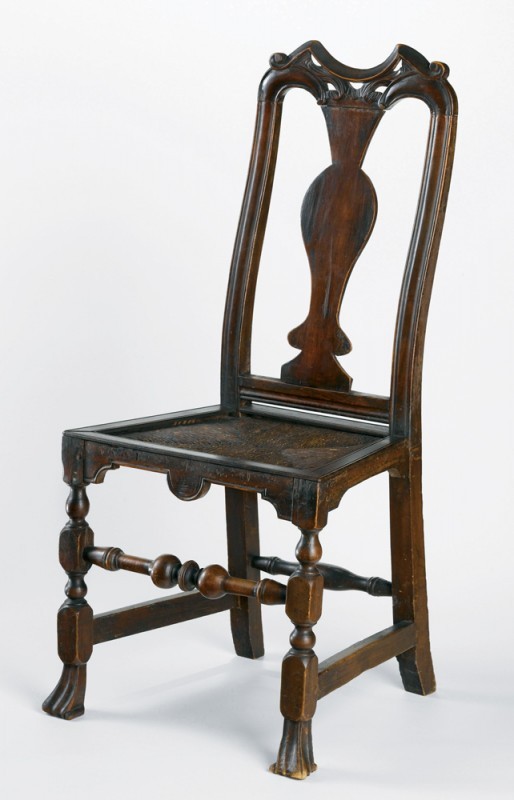
Side chair attributed to John Gaines III, Portsmouth, New Hampshire, 1735–1743. Maple. H. 40 1/4", W. 20 1/2", D. 17". (Private collection; photo, Gavin Ashworth.) The blocked, rush seat and the retaining strips are restored.
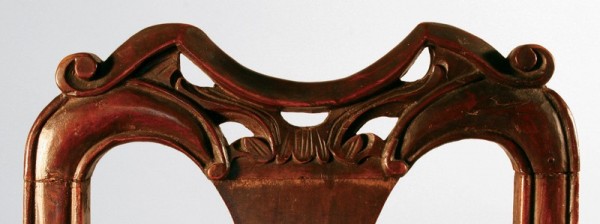
Detail of the crest of the chair illustrated in fig. 1. (Photo, Luke Beckerdite.)
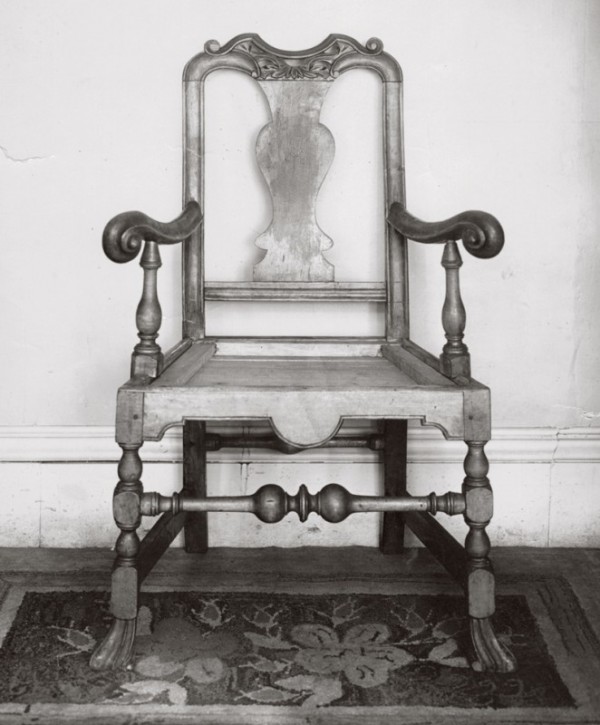
Armchair attributed to John Gaines III, Portsmouth, New Hampshire, 1735–1743. Maple. H. 42 3/16", W. 25 1/2", D. 16 3/8" (seat). (Private collection; photo, Winterthur Library, Decorative Arts Photographic Collection.) This photograph was taken ca. 1930. At that time, the rush on the blocked seat frame and some of the arched retaining strips were missing.
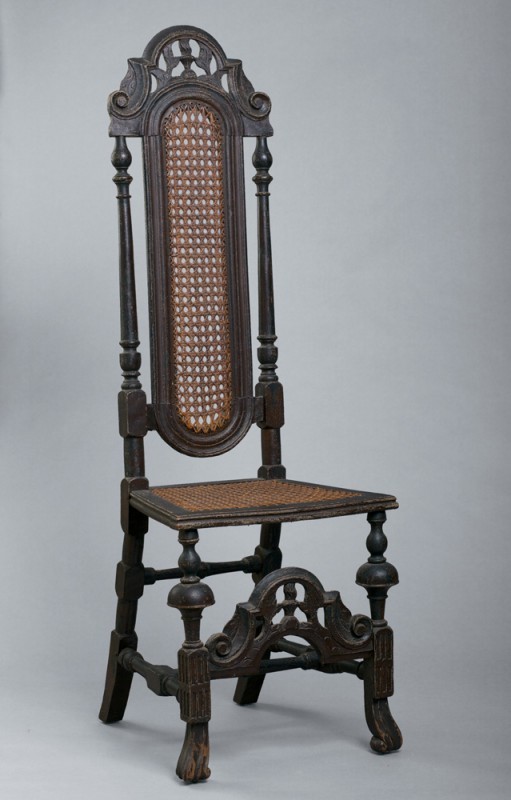
Cane chair, London, England, 1710–1720. Beech. H. 53 5/8", W. 18 1/4", D. 18 3/8". (Courtesy, Cape Ann Museum; photo, Andrew Davis.) High-backed London cane chairs with scrolled crests may have influenced the design of Gaines chairs. This example may have been owned in Essex County, Massachusetts, during the eighteenth century.
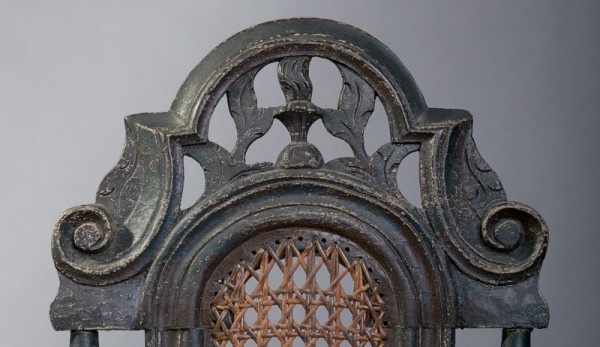
Detail of the crest of the chair illustrated in fig. 4. (Photo, Andrew Davis.) Although the design of the crest is metropolitan in origin, the carving is perfunctory in execution.
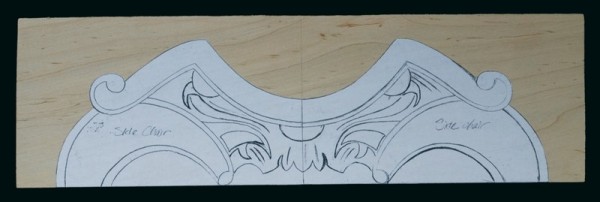
Paper pattern of a reproduction Gaines crest glued to a crest blank. (Courtesy, Andersen & Stauffer; photo, Andrew Davis.)

Reproduction Gaines crest with the apertures sawn out. (Courtesy, Andersen & Stauffer; photo, Andrew Davis.)

Reproduction Gaines crest partially carved. (Courtesy, Andersen & Stauffer; photo, Andrew Davis.)

Reproduction Gaines crest at a later stage of carving. (Courtesy, Andersen & Stauffer; photo, Andrew Davis.)
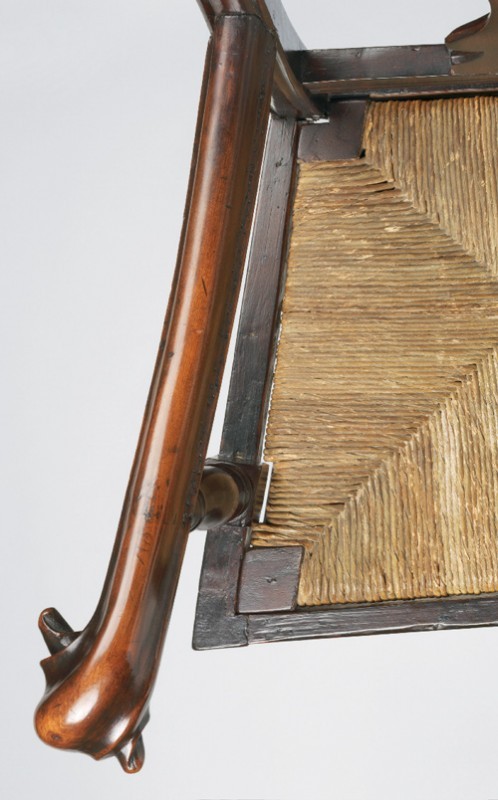
Detail of an armchair attributed to John Gaines III, showing an overhead view of the arm. (Courtesy, Winterthur Museum, bequest of H. F. du Pont; photo, Laszlo Bodo.)

Detail of an armchair attributed to John Gaines III, showing a side view of the arm. (Courtesy, Winterthur Museum, bequest of H. F. du Pont; photo, Laszlo Bodo.)

Sawn blank for a reproduction Gaines arm. (Courtesy, Andersen & Stauffer; photo, Andrew Davis.)

Roughed-out molding for a reproduction Gaines arm. (Courtesy, Andersen & Stauffer; photo, Andrew Davis.)

Carved grip for a reproduction Gaines arm. (Courtesy, Andersen & Stauffer; photo, Andrew Davis.)

Sawn foot for a reproduction Gaines chair. (Courtesy, Andersen & Stauffer; photo, Andrew Davis.)

Carved foot for a reproduction Gaines chair. (Courtesy, Andersen & Stauffer; photo, Andrew Davis.)

Detail of a Gaines chair from the Brewster set (see fig. 1), showing the restored, blocked rush seat and arched retaining strips based on those of the armchair illustrated in fig. 2. (Courtesy, Winterthur Museum, purchased with funds provided by an anonymous donor and Mr. and Mrs. Theodore Alfond; photo, Jim Schneck.)

Detail of a Gaines chair from the Brewster set (see fig. 1), showing the small shaved bracket supporting the restored rushed seat frame.
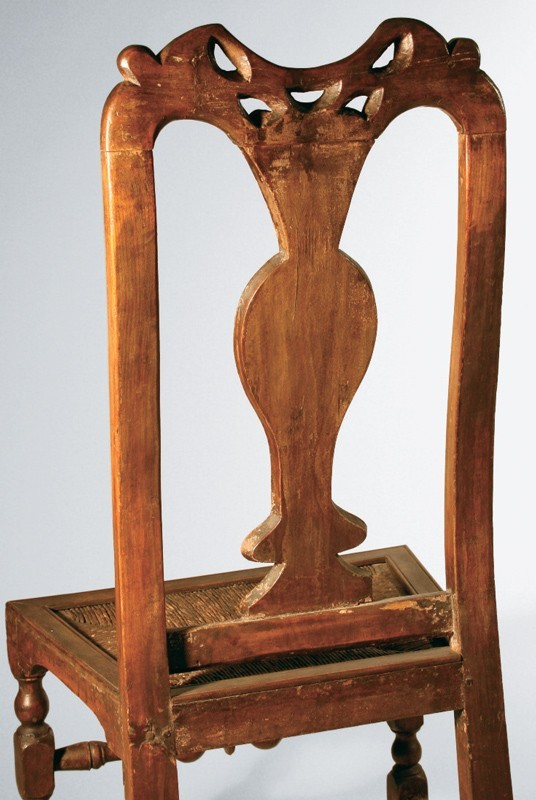
Rear view of the chair illustrated in fig. 1, showing the rough dressing of the frame. (Photo, Luke Beckerdite.)
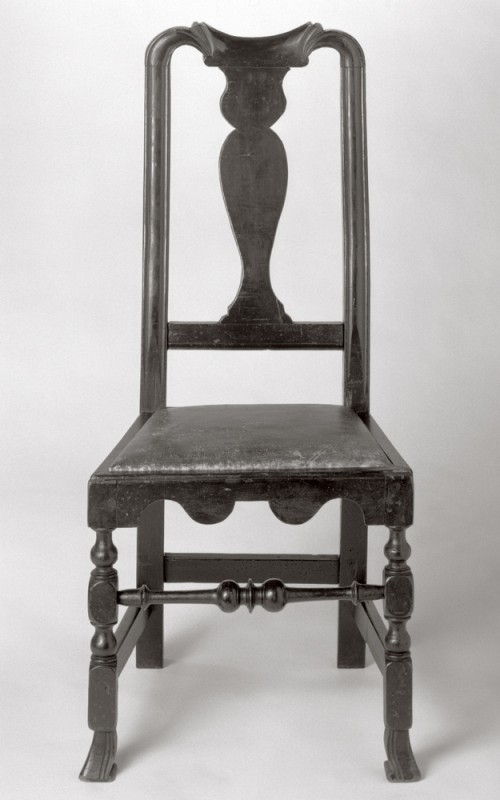
Side chair, Boston, Massachusetts, 1735–1750. Maple. H. 42 1/4", W. 17 3/4", D. 18 5/8". (Courtesy, Winterthur Museum, bequest of H. F. du Pont; photo, George Fistrovich.)
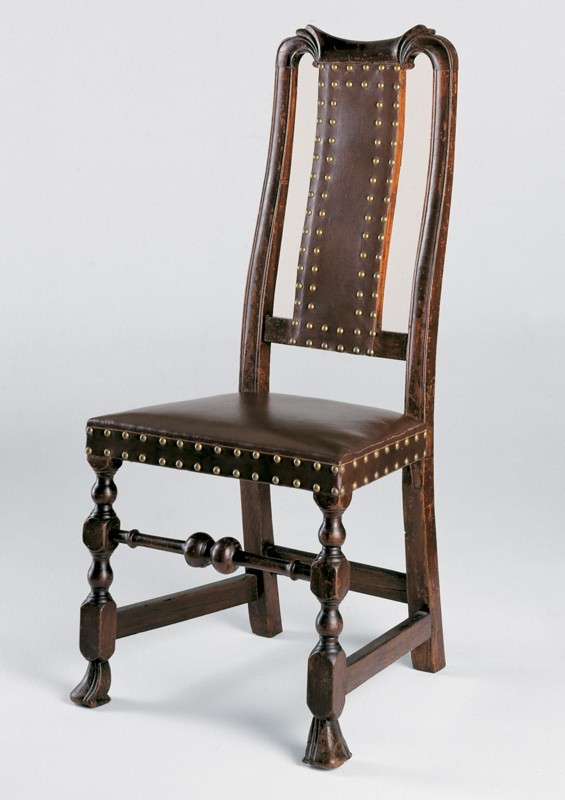
Side chair, Boston, Massachusetts, 1720–1735. Walnut and maple. H. 41 1/2", W. 19 1/2", D. 20". (Chipstone Foundation; photo, Gavin Ashworth.)

Armchair, possibly Boston, Massachusetts, or Portsmouth, New Hampshire, 1730–1750. Maple. H. 42", W. 26", D. 25". (Private collection; photo, Gavin Ashworth.)
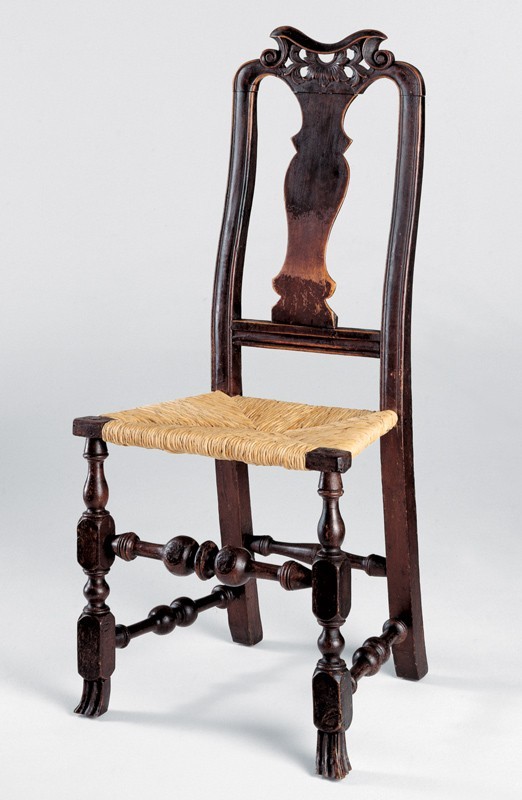
Side chair, possibly Portsmouth, New Hampshire, 1730–1750. Maple. H. 42 1/4", W. 19", D. 18 1/4". (Chipstone Foundation; photo, Gavin Ashworth).
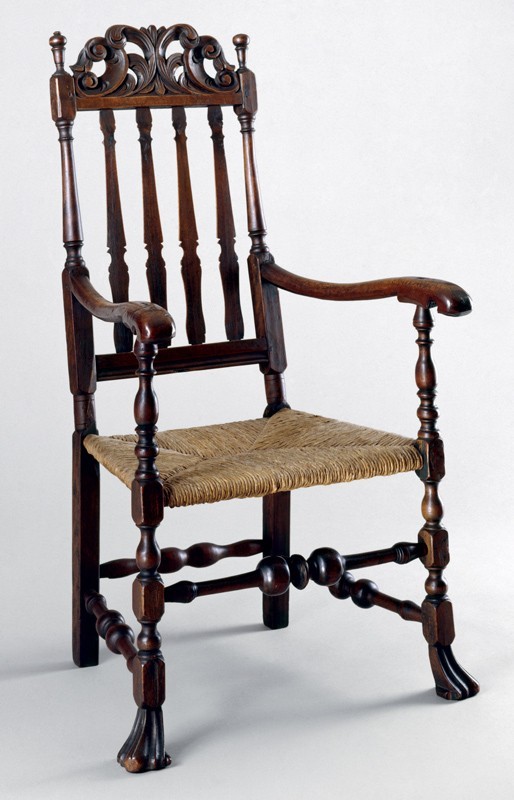
Armchair, Portsmouth, New Hampshire, 1725–1760. Maple, poplar, and ash. H. 44 1/2", W. 26 1/2", D. 22 1/2". (Courtesy, Metropolitan Museum of Art, gift of Mrs. Russell Sage; photo, Gavin Ashworth / Art Resource, NY.)

Side chair, Portsmouth, New Hampshire, 1735–1750. Maple. H. 40 1/4", W. 20 5/8", D. 16 1/2". (Private collection; photo, Andrew Davis.) An apprentice or journeyman from John Gaines III’s shop may have made this chair.

Detail of a foot on the chair illustrated in fig. 25, showing the pieced-out toes. (Private collection; photo, Andrew Davis.)
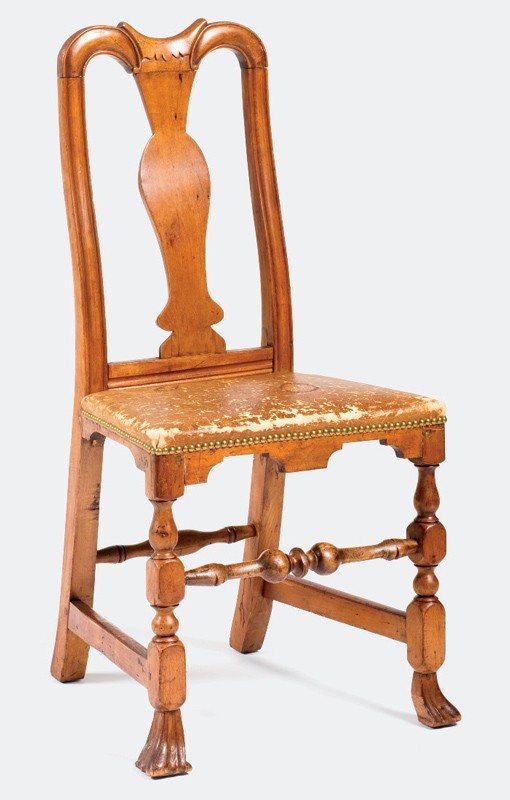
Side chair, Portsmouth, New Hampshire, 1740–1760. Maple. H. 30 7/8", W. 20 3/4", D. 16". (Private collection; photo, Andrew Davis.) An apprentice or journeyman from John Gaines III’s shop may have made this chair. The upholstery is modern. Originally, the chair had a blocked rush seat held by retaining strips.

Armchair and two side chairs, Portsmouth, New Hampshire, 1740–1760. Maple. Dimensions not recorded. (Private collection; photo, Leigh Keno Antiques.)
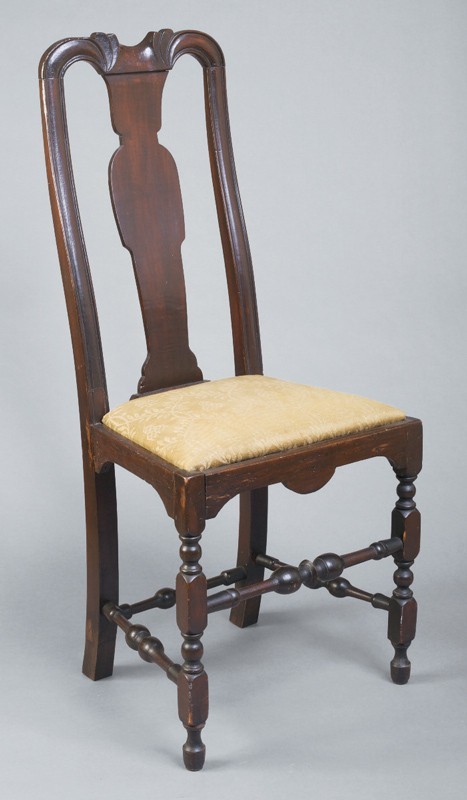
Side chair, Portsmouth, New Hampshire, 1740–1760. Maple. H. 41 3/8", W. 21 3/8", D. 18 1/2". (Courtesy, Strawbery Banke Museum, anonymous loan; photo, Andrew Davis.) The feet are restored. The turnings on the side and rear stretchers are rare in Boston seating but common in Portsmouth work.
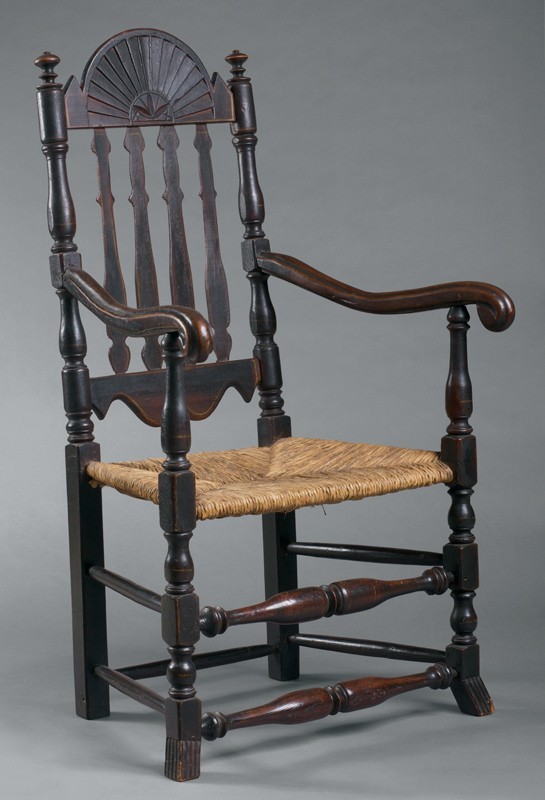
Armchair, Portsmouth, New Hampshire, 1740–1775. Maple. H. 44 5/8", W. 25 1/2", D. 22 3/4". (Courtesy, Old Sturbridge Village; photo, Andrew Davis.) The bottoms of the feet are restored about 1".
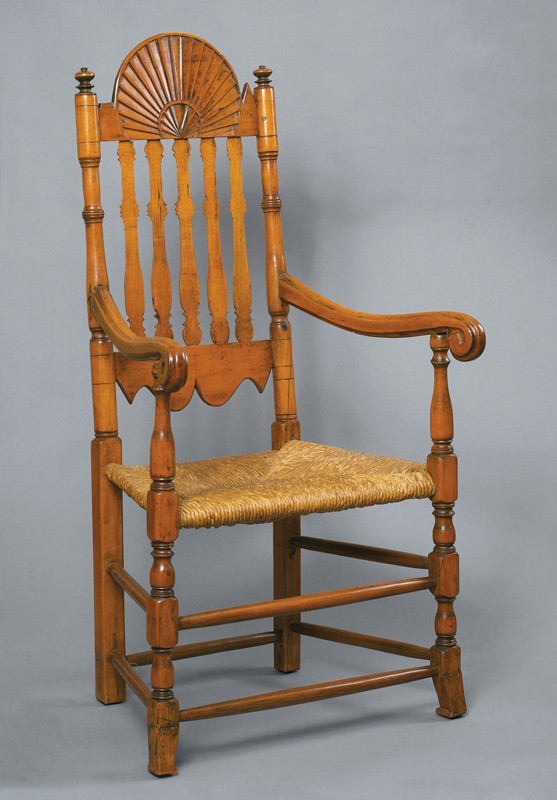
Armchair, Portsmouth, New Hampshire, 1740–1770. Maple. H. 46 3/4", W. 24 3/4", D. 21 1/2". (Private collection; photo, Andrew Davis.) The bottoms of the feet are restored about 1 1/2".

Banister back armchair, Portsmouth, New Hampshire, 1740–1770. Maple and rush. H. 45 1/2", W. 25", D. 19". (Collection of Shelburne Museum. 3.3-262. Photo, Gavin Ashworth.) With their drooping terminals, the arms of this chair resemble those on later Portsmouth examples with other crest designs. The tenons on the crests of these chairs usually have only one shoulder, sometimes on the front face, sometimes on the rear face, and the shoulders of the tenons are coped to conform to the rounded posts.

Side chair, Portsmouth, New Hampshire, 1740–1770. Maple. H. 40", W. 21", D. 14". (Private collection; photo, Northeast Auctions.)

Armchair, Portsmouth, New Hampshire, 1730–1760. Maple and ash. H. 45 3/4", W. 25", D. 20". (Courtesy, Strawbery Banke Museum, gift of Sally Sangser and Nancy Borden in memory of their brother Henry Chandler Homer; photo, Andrew Davis.) The feet are missing.
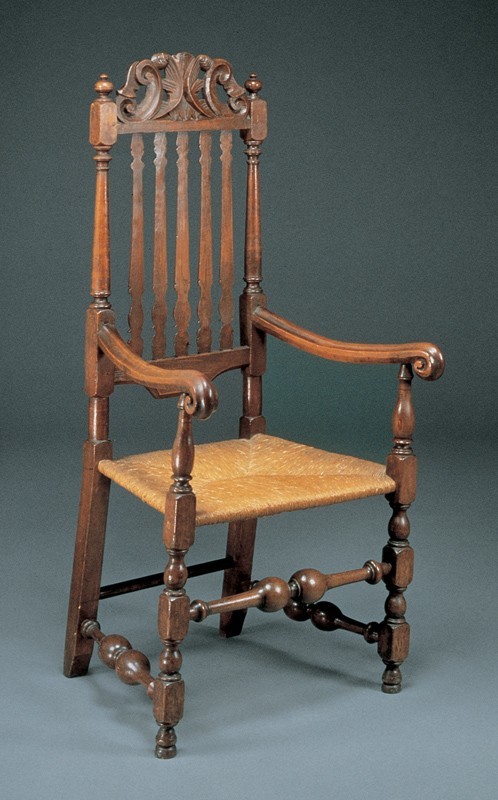
Armchair, Portsmouth, New Hampshire, 1730–1760. Maple and ash. Dimensions not recorded. (Private collection; photo, Sotheby’s.)
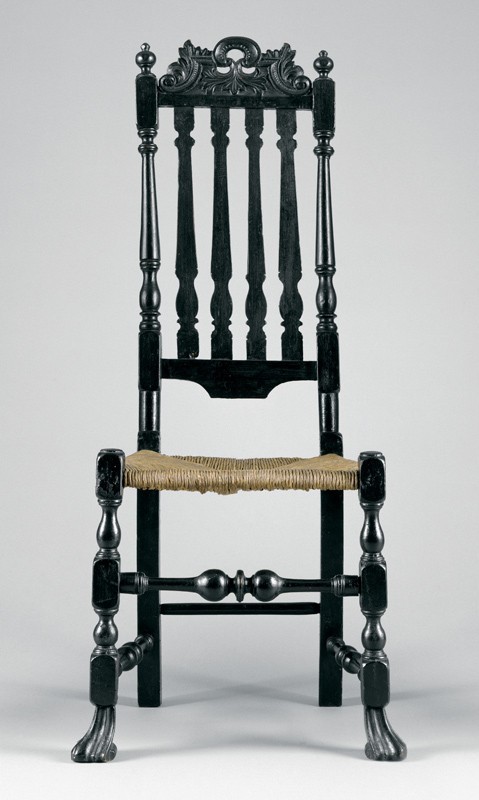
Side chair, Portsmouth, New Hampshire, 1730–1760. Poplar, maple, and ash. H. 47 1/2", W. 21", D. 16 1/2". (Courtesy, Metropolitan Museum of Art, gift of Mrs. Screven Lorillard; photo, Gavin Ashworth / Art Resource, NY.)

Side chair, Portsmouth, New Hampshire, 1750–1775. Maple and ash. H. 48 1/2", W. 18 1/2", D. 20". (Courtesy, Witch House Museum, Department of Parks and Recreation, City of Salem, Massachusetts; photo, Andrew Davis.)
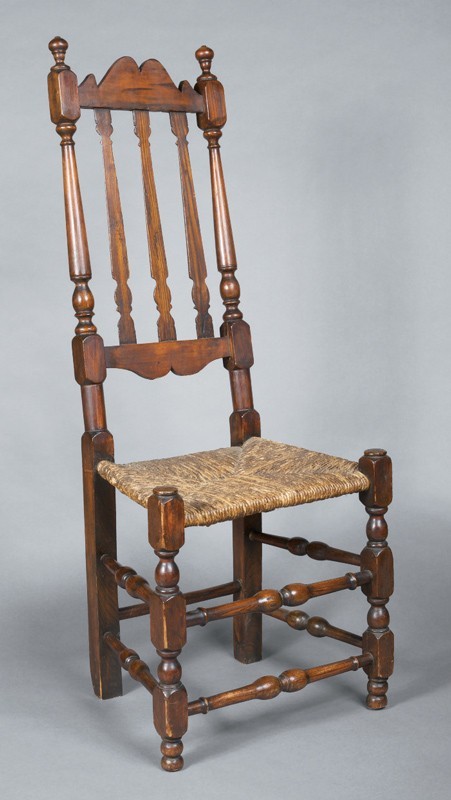
Side chair, Portsmouth, New Hampshire, 1750–1775. Maple and ash. H. 45 1/2", W. 18 1/2", D. 19". (Courtesy, Witch House Museum, Department of Parks and Recreation, City of Salem, Massachusetts; photo, Andrew Davis.)

Overmantel panel, Ipswich, Massachusetts, 1740–1760. Pine. 18 1/4" x 55". (Courtesy, Ipswich Museum, gift of George W. Caldwell; photo, Andrew Davis.)
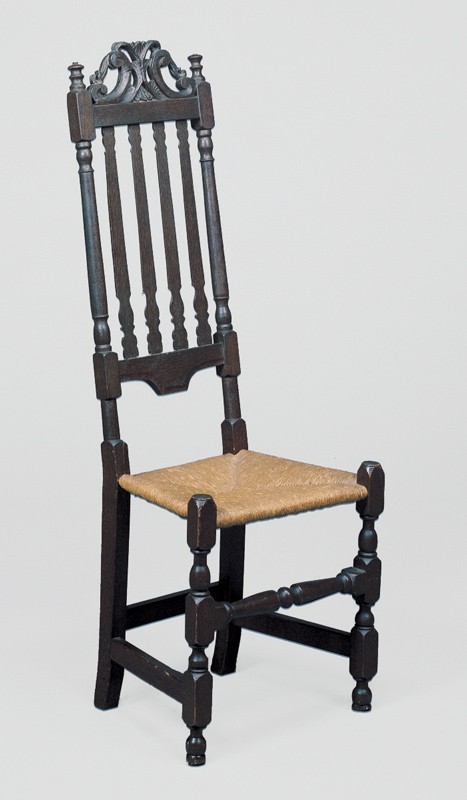
Side chair, Ipswich, Massachusetts, 1740–1760. Maple and ash. H. 52 1/2", W. 18 3/4", D. 13 1/2". (Private collection; photo, Sotheby’s.)

Side chairs, Ipswich, Massachusetts, 1740–1760. Maple and ash. H. 46", W. 18 5/8", D. 15 1/2". (Courtesy, Ipswich Museum; photo, Andrew Davis.) The carving of the triangular reserve on the stay rails is slightly different.
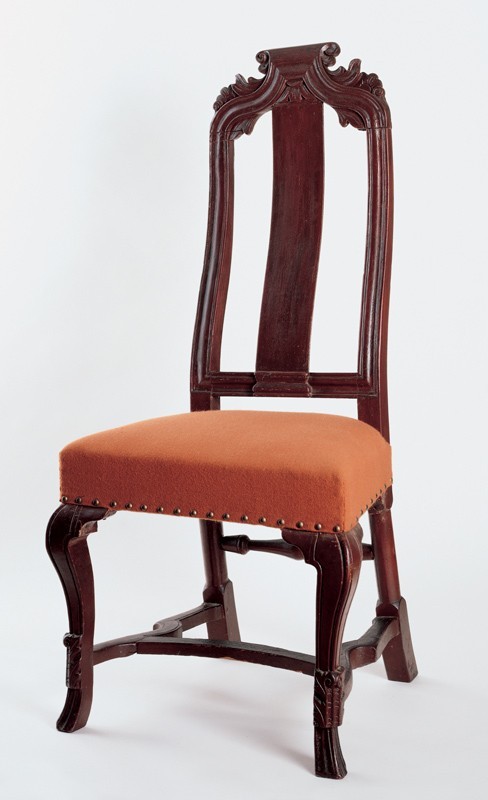
Side chair, possibly John Gaines II or Thomas Gaines I, probably Ipswich, Massachusetts, 1730–1760. Maple. H. 42 1/2", W. 18 1/2", D. 15". (Courtesy, Ipswich Museum; photo, Gavin Ashworth.) It is possible that the maker and carver of this chair were not the same person.
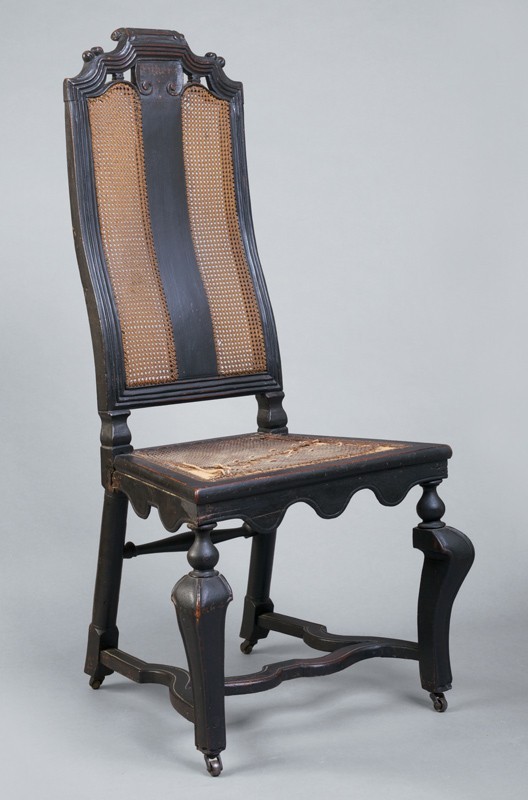
Side chair, London, England, 1725–1740. Beech. H. 42 1/2", W. 20 1/8", D. 19". (Courtesy, Strawbery Banke Museum, gift of Mary Storer Decatur; photo, Andrew Davis.) The feet are missing.

Armchair, Boston, Massachusetts, 1710–1740. Maple and ash. H. 53", W. 24 1/4", D. 24 3/4". (Private collection; photo, Andrew Davis.) The design of this chair has exact parallels in Boston leather chairs.
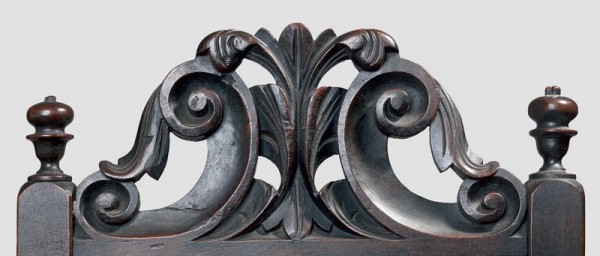
Detail of the crest of the armchair illustrated in fig. 44. (Photo, Andrew Davis.)
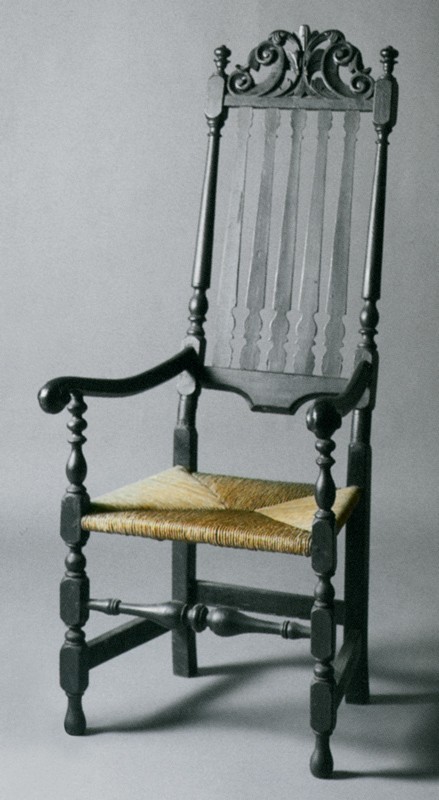
Armchair, Boston, Massachusetts, 1720–1740. Maple and ash. Dimensions not recorded. (Private collection; photo, Northeast Auctions.) This chair and the example illustrated in fig. 44 have rectangular side and rear stretchers, whereas most chairs from other New England ports have turned examples. The use of rectangular side and rear stretchers on Boston banister-back chairs supports Benno Forman’s theory that they were made side by side with leather chairs.
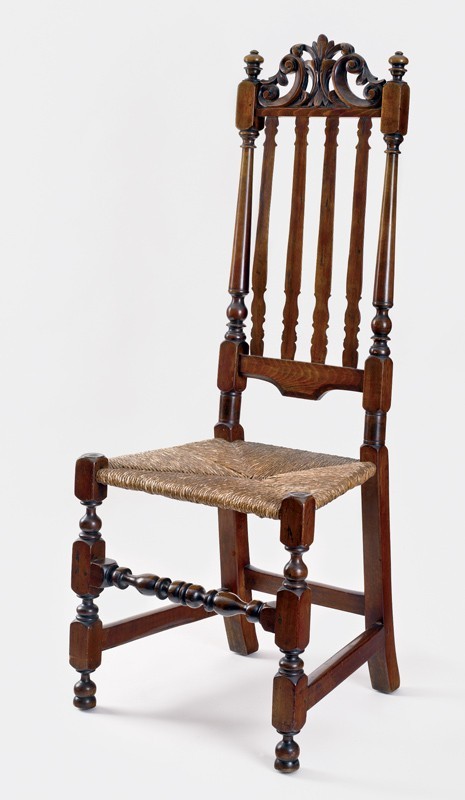
Side chair, Boston, Massachusetts, 1720–1740. Maple and ash. H. 49", W. 18 3/4", D. 16 3/8". (Private collection; photo, Gavin Ashworth.)
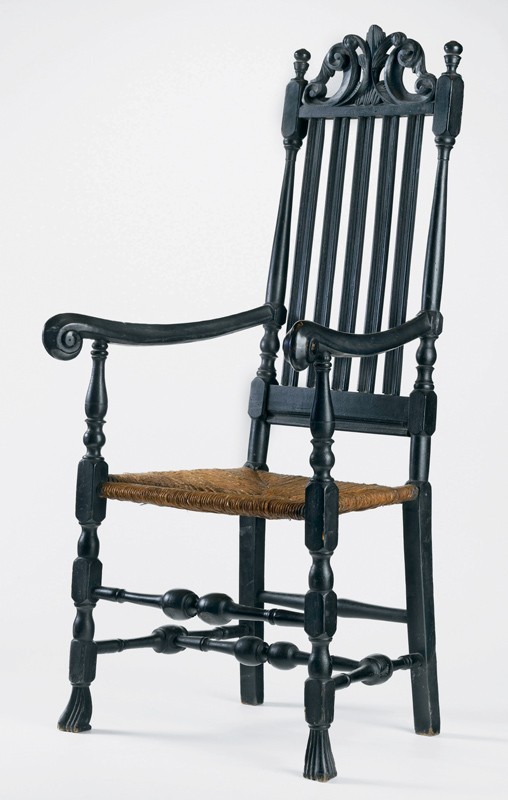
Armchair, Salem, Massachusetts, 1725–1750. Maple, poplar, and ash. H. 48 5/8", W. 26 1/8", D. 19". (Private collection; photo, Gavin Ashworth.) The feet are restored. The arms of Salem banister-back chairs display marked variation. On this example, the arms have a pronounced outward twist at the wrists and large scrolled terminals. There may be some stylistic relationship between these arms and those of Portsmouth seating.

Detail of the crest of the armchair illustrated in fig. 48. (Photo, Luke Beckerdite.)
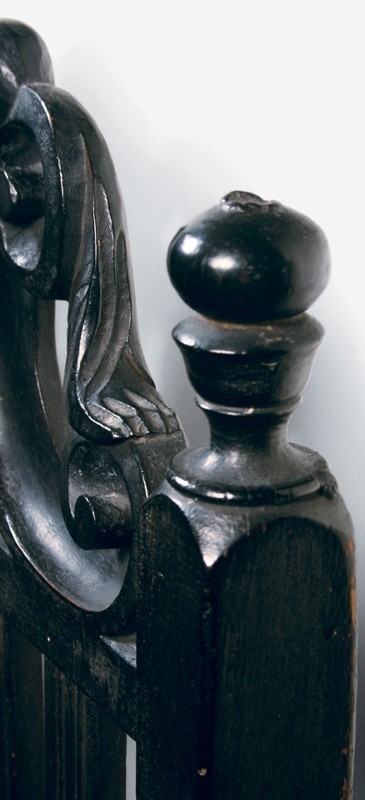
Detail showing the gouge cuts on the upper surfaces of the end volutes of the crest of the armchair illustrated in fig. 48. (Photo, Luke Beckerdite.)
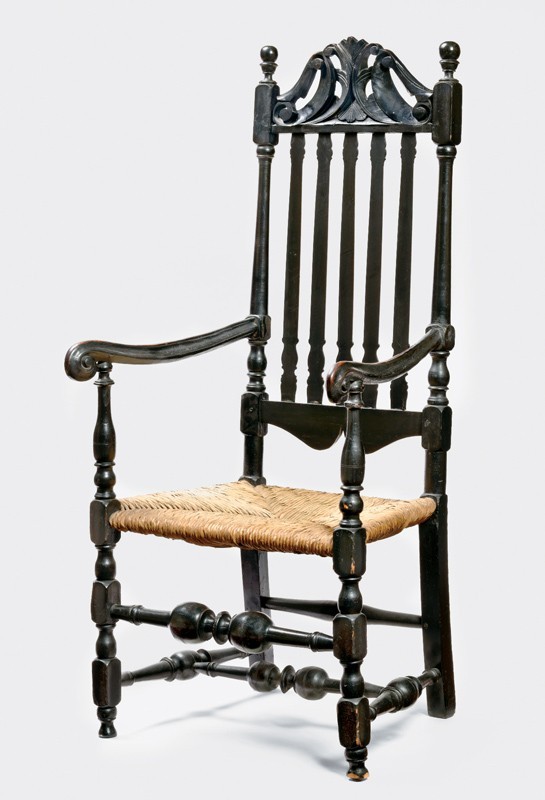
Armchair, Salem, Massachusetts, 1725–1750. Maple, poplar, and ash. H. 49 3/4", W. 22 3/8". (Courtesy, Museum of the City of New York; photo, Gavin Ashworth.) The arms of this chair are relatively straight and have small terminals.
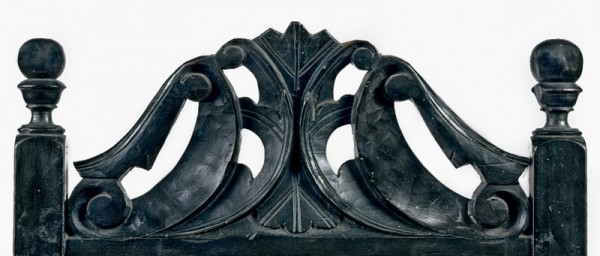
Detail of the crest of the armchair illustrated in fig. 51. (Photo, Gavin Ashworth.)
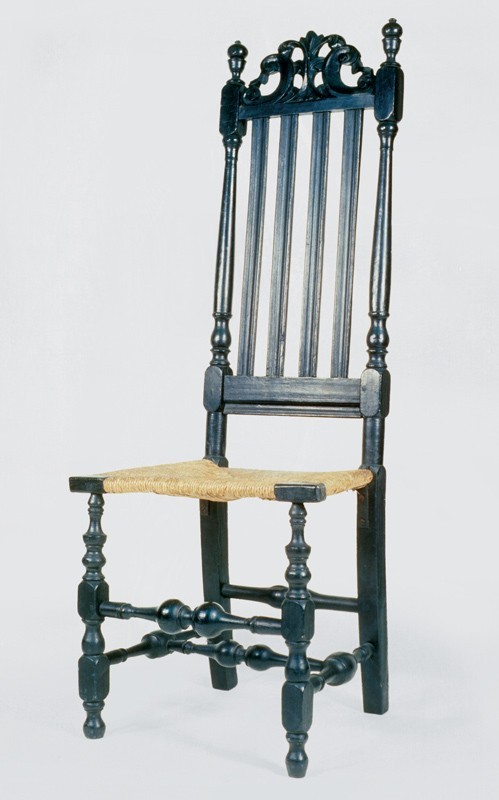
Side chair, Salem, Massachusetts, 1725–1750. Maple, poplar, and ash. H. 48 5/8", W. 18 3/8", D. 16 1/2". (Courtesy, Historic New England, gift of Dorothy S. F. M. Codman.)

Side chair, Salem, Massachusetts, 1725–1760. Maple, poplar, and ash. H. 48 3/8", W. 18", D. 16 3/4". (Private collection; photo, Gavin Ashworth.). The feet are restored.
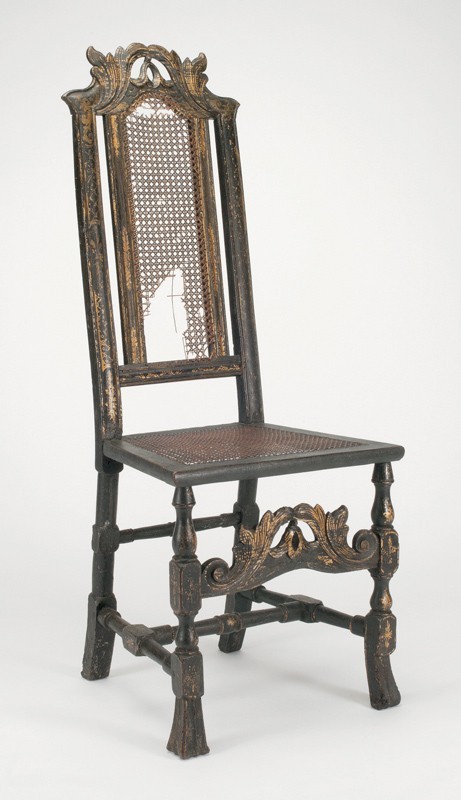
Side chair, London, England, 1720–1740. Beech. H. 4 3/4$", W. 18 1/2", D. 18". (Private collection; photo, Jim Schneck.)
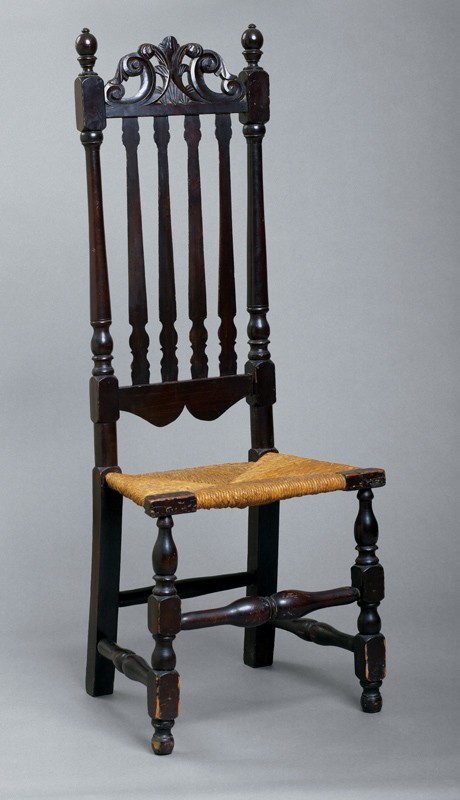
Side chair, Salem, Massachusetts, 1735–1760. Maple, poplar, and ash. H. 47 7/8", W. 18", D. 16 1/2". (Courtesy, Cape Ann Museum, gift of Alfred Mayor; photo, Andrew Davis.) This chair and its mate descended in the Dennison family of the Annisquam section of Gloucester, Massachusetts.
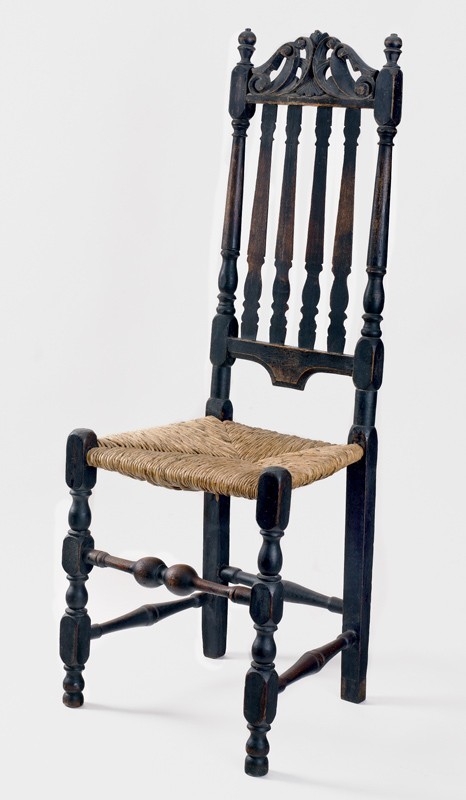
Side chair, Salem, Massachusetts, 1740–1770. Maple, poplar, and ash. H. 47", W. 18", D. 18". (Private collection; photo, Gavin Ashworth.) The feet are restored.

Armchair, Salem, Massachusetts, 1740–1770. Maple, poplar, and ash. H. 49", W. 24 3/4", D. 19". (Courtesy, Glebe House, purchased with funds provided by Lispinard Seabury Crocker; photo, Tom Schwenke.)
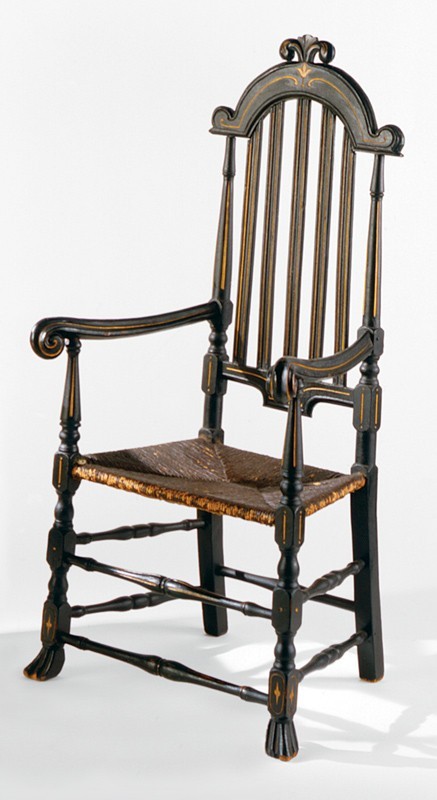
Armchair, southern Essex County, Massachusetts, 1740–1770. Woods not recorded. H. 50 1/2". (Private collection; photo, Sotheby’s.) The black-and-gold paint and incised decoration are nineteenth-century embellishments.

Side chair, southern Essex County, Massachusetts, 1740–1770. Maple. H. 47 1/2", W. 19", D. 16". (Courtesy, Winterthur Museum, bequest of H. F. du Pont; photo, Jim Schneck.)
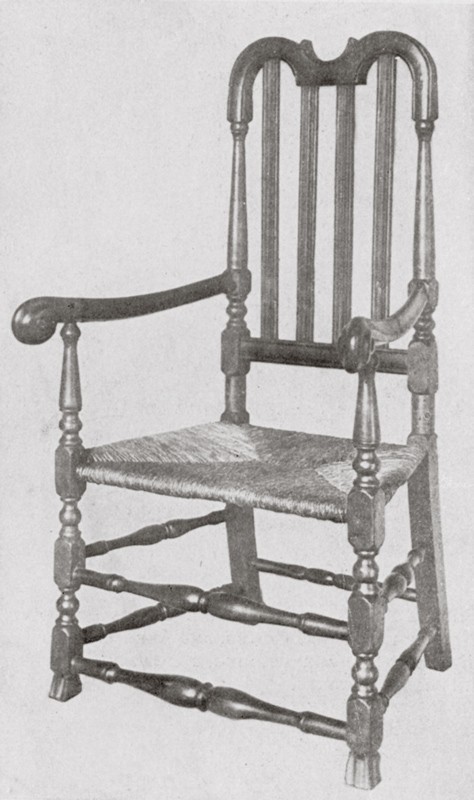
Armchair, southern Essex County, Massachusetts, 1740–1770. (Wallace Nutting, Furniture Treasury, 2 vols. [Framingham, Mass.: Old America Company, 1928], 2:2089.)

Armchair, Newbury, Massachusetts, 1730–1760. Maple, poplar, and ash. H. 49 3/4", W. 23 1/4", D. 19 3/4". (Private collection; photo, Gavin Ashworth.)
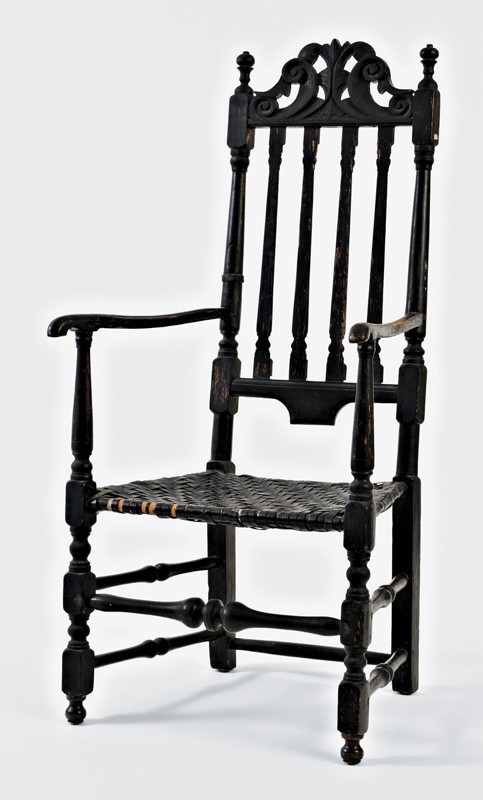
Armchair, Newbury, Massachusetts, 1740–1770. Woods not recorded. H. 47 1/2", W. 23", D. 16 1/2". (Courtesy, Friends of Historic Kingston and the Fred J. Johnston Museum, bequest of Fred J. Johnston; photo, Douglas Baz.) The feet are restored.

Side chair, Newbury, Massachusetts, 1740–1770. Maple, poplar, and ash. H. 46", W. 19 1/2", D. 16 1/2". (Courtesy, Historical Society of Old Newbury, gift of Margaret FitzGerald and Iola Benedict; photo, Gavin Ashworth.)
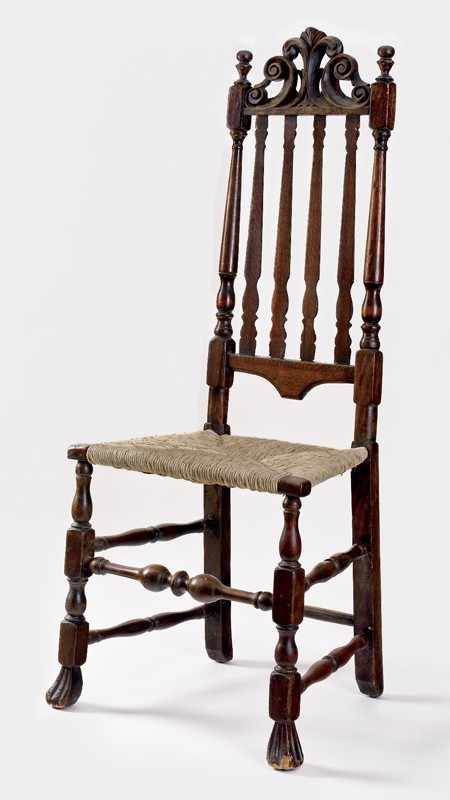
Side chair, Newbury, Massachusetts, 1740–1770, Maple, poplar, and ash. H. 46 5/8", W. 19 1/2", D. 15 1/2". (Private collection; photo, Gavin Ashworth.)

Side chair, Newbury, Massachusetts, 1740–1770. Maple, poplar, and ash. H. 45 1/2", W. 19", D. 15 1/4". (Private collection; photo, Gavin Ashworth.)
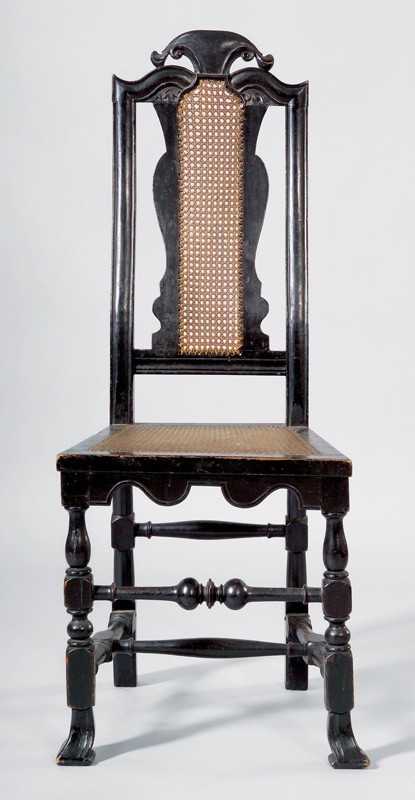
Side chair, Boston, Massachusetts, 1720–1740. Maple. H. 45 1/2", W. 19", D. 18". (Chipstone Foundation; photo, Skinner.)

Side chair, Boston, Massachusetts, 1725–1760. Maple. H. 43 1/2", W. 20 7/8", D. 17". (Private collection; photo, Andrew Davis.)
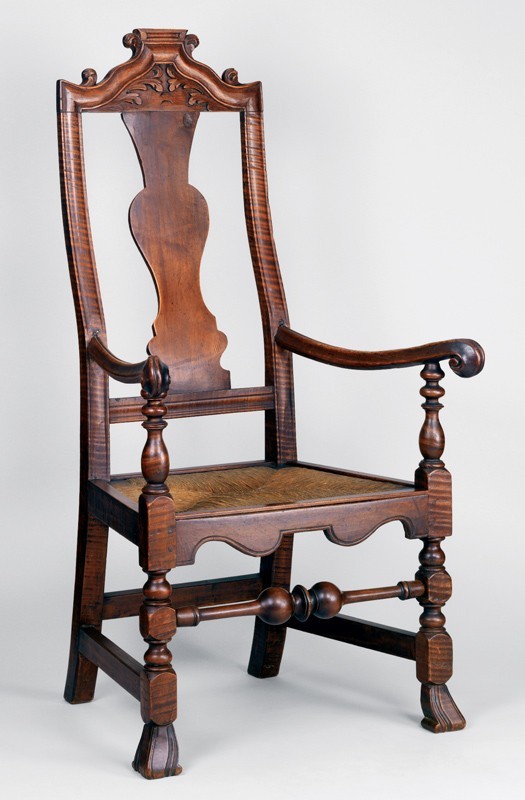
Armchair, Boston, Massachusetts, 1730–1750. Maple. H. 48 1/2", W. 25 5/8", D. 23 1/2". (Private collection; photo, Laszlo Bodo.) The feet are partially restored.

Side chair, possibly Essex County, Massachusetts, 1740–1770. Maple, poplar, and ash. H. 47 1/4", W. 18 1/2", D. 17". (Private collection; photo, Andrew Davis.)

Side chair, probably northern Essex County, Massachusetts, 1740–1770. Maple and ash. H. 49 1/2", W. 18", D. 16 5/8". (Courtesy, Currier Musuem of Art; photo, Andrew Davis.) This chair is one of four identical examples that reputedly belonged to Meschach Weare of Hampton Falls, New Hampshire.
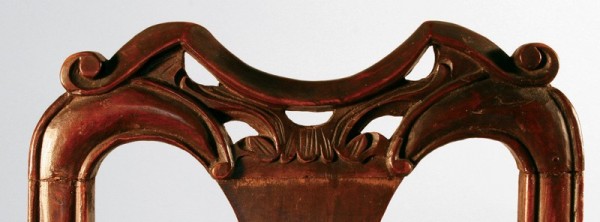
Detail of the crest of the chair illustrated in fig. 1.
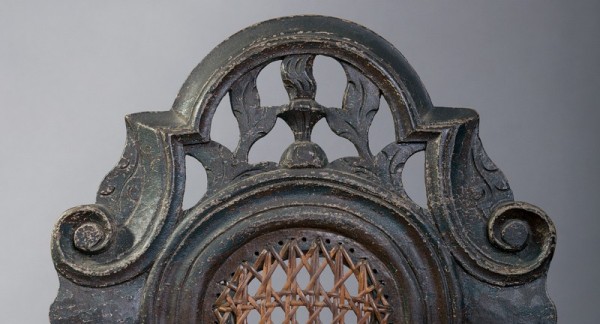
Detail of the crest of the chair illustrated in fig. 4.
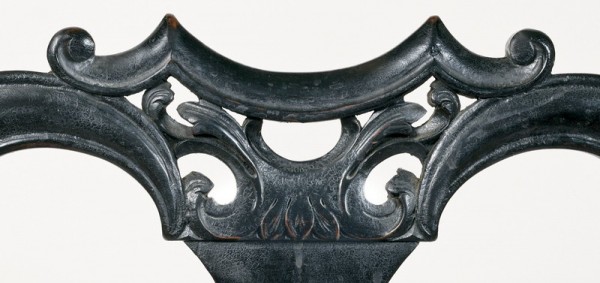
Detail of the crest of the armchair illustrated in fig. 22.
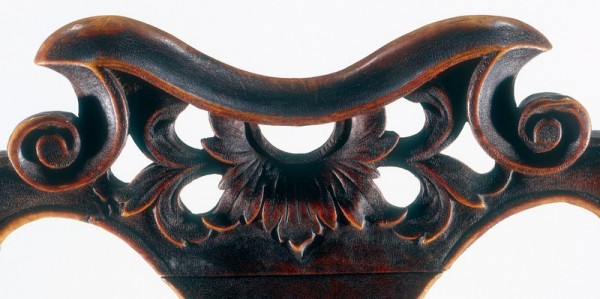
Detail of the crest of the chair illustrated in fig. 23.
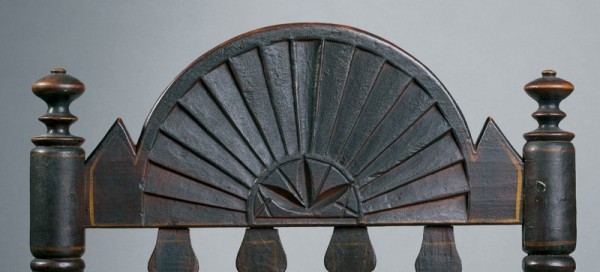
Detail of the crest of the armchair illustrated in fig. 30.
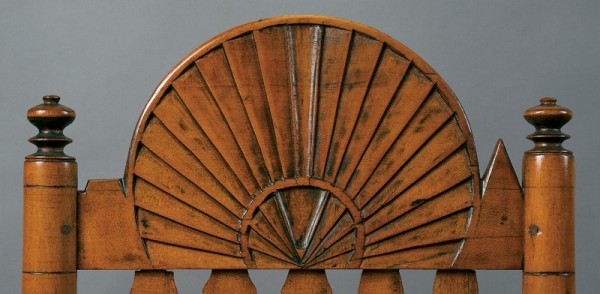
Detail of the crest of the armchair illustrated in fig. 31.
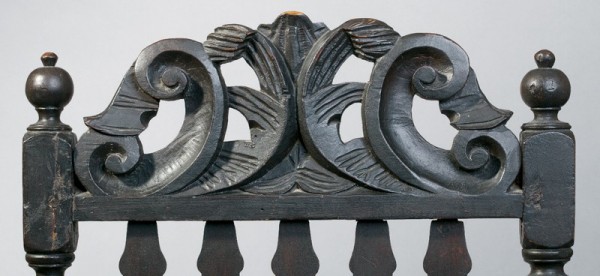
Detail of the crest of the armchair illustrated in fig. 34.

Detail of the crest of the chair illustrated in fig. 36.
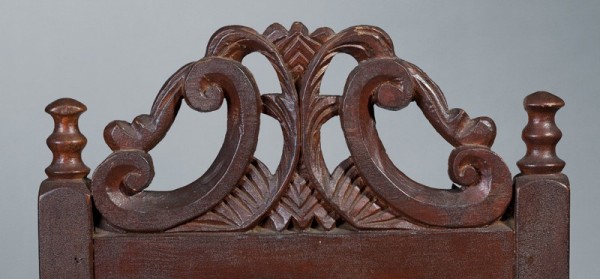
Detail of the crest of the chair (left) illustrated in fig. 41.
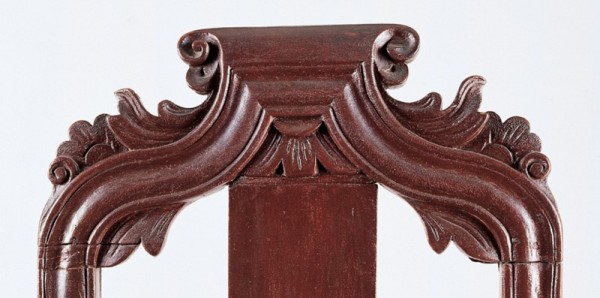
Detail of the crest of the chair illustrated in fig. 42.
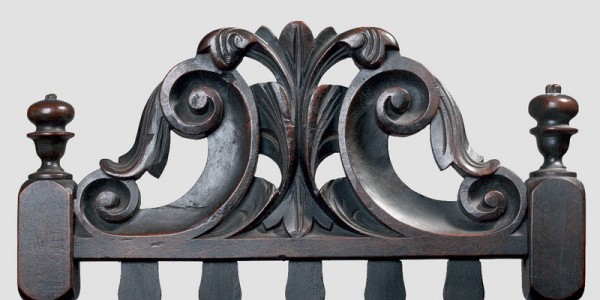
Detail of the crest of the armchair illustrated in fig. 44.

Detail of the crest of the armchair illustrated in fig. 48.
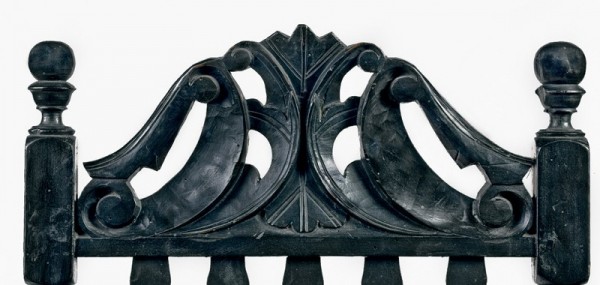
Detail of the crest of the armchair illustrated in fig. 51.
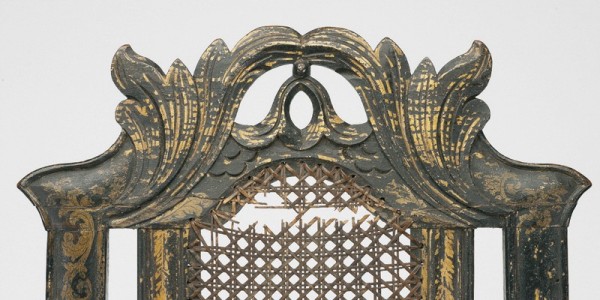
Detail of the crest of the chair illustrated in fig. 55.

Detail of the crest of the armchair illustrated in fig. 62.
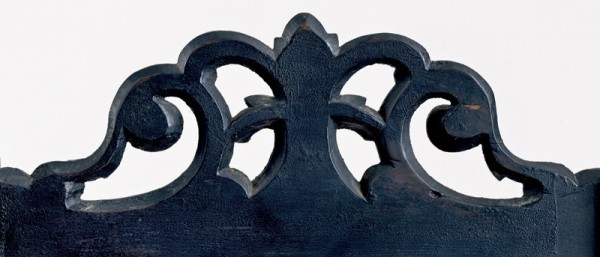
Detail of the back of the crest of the armchair illustrated in fig. 62.

Detail of the crest of the chair illustrated in fig. 67.
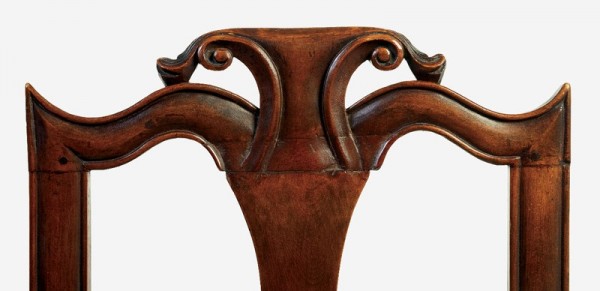
Detail of the crest of the chair illustrated in fig. 68.
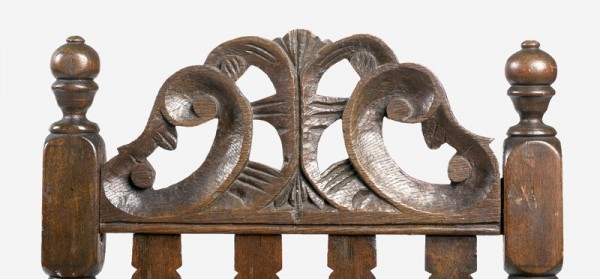
Detail of the crest of the chair illustrated in fig. 70.

Detail of the crest of the chair illustrated in fig. 71.
